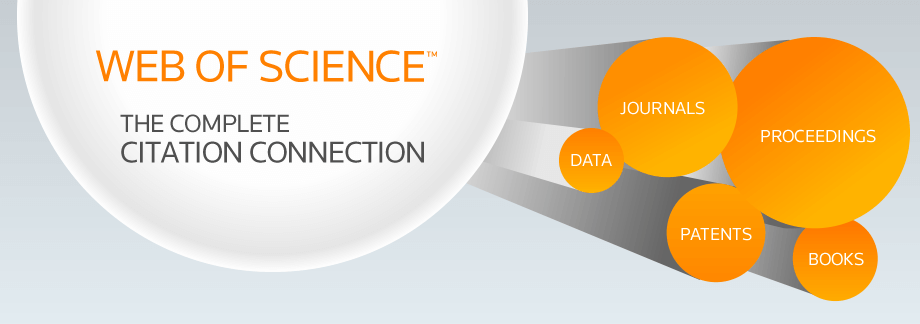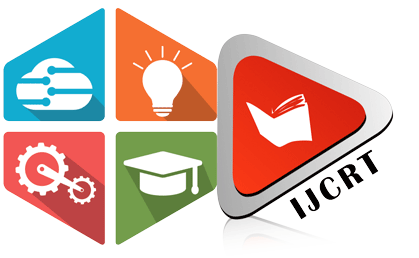INTERNATIONAL JOURNAL OF CREATIVE RESEARCH THOUGHTS - IJCRT (IJCRT.ORG)
International Peer Reviewed & Refereed Journals, Open Access Journal
IJCRT Peer-Reviewed (Refereed) Journal as Per New UGC Rules.
ISSN Approved Journal No: 2320-2882 | Impact factor: 7.97 | ESTD Year: 2013
Call For Paper - Volume 13 | Issue 11 | Month- November 2025
Scholarly open access journals, Peer-reviewed, and Refereed Journals, Impact factor 7.97 (Calculate by google scholar and Semantic Scholar | AI-Powered Research Tool) , Multidisciplinary, Monthly, Indexing in all major database & Metadata, Citation Generator, Digital Object Identifier(CrossRef DOI)
Contact Us Click Here
WhatsApp Contact Click Here
Volume 9 | Issue 4
| IJCRT Journal front page | IJCRT Journal Back Page |
Paper Title: Impact of Digital Resources in Modern Education System in NEI with Special Reference to Assam
Publisher Journal Name: IJCRT
Your Paper Publication Details:
Published Paper ID: - IJCRT2104751
Register Paper ID - 289073
Title: IMPACT OF DIGITAL RESOURCES IN MODERN EDUCATION SYSTEM IN NEI WITH SPECIAL REFERENCE TO ASSAM
Author Name(s): Aynul Hoque Choudhury, Dr. Shokim Uddin Ahmed
Publisher Journal name: IJCRT
Volume: 9
Issue: 4
Pages: 6269-6274
Year: April 2021
Downloads: 263
Abstract
This study examines the impact of digital resources on the modern education system in North-East India, with special reference to Assam. The rapid integration of digital technologies in education has transformed teaching and learning processes, especially in the wake of the COVID-19 pandemic. The research explores the extent of digital resource adoption, the effectiveness of digital tools, challenges faced by students and teachers, and the role of government initiatives in promoting digital education. Data was collected through surveys, interviews, and secondary sources from various educational institutions across urban and rural areas of Assam. The findings reveal significant improvements in access and engagement but also highlight persistent issues such as infrastructural limitations, digital divide, and inadequate teacher training. The study concludes with recommendations for enhancing digital infrastructure, capacity building, localized content development, and inclusive policies to ensure equitable and sustainable digital education in the region.
Licence: creative commons attribution 4.0
License
Keywords
Digital Resources, Modern Education, Assam, Digital Divide, Teacher Training
License
Paper Title: Empirical Assessment of Household Water Filtration Efficacy During the COVID-19 Second Wave: A Case Study from Rural India (January-April 2021)
Publisher Journal Name: IJCRT
Your Paper Publication Details:
Published Paper ID: - IJCRT2104750
Register Paper ID - 288829
Title: EMPIRICAL ASSESSMENT OF HOUSEHOLD WATER FILTRATION EFFICACY DURING THE COVID-19 SECOND WAVE: A CASE STUDY FROM RURAL INDIA (JANUARY-APRIL 2021)
Author Name(s): Vaishali Patel
Publisher Journal name: IJCRT
Volume: 9
Issue: 4
Pages: 6259-6268
Year: April 2021
Downloads: 218
Abstract
The second wave of the COVID-19 pandemic in India brought unprecedented challenges to the public health system. Ensuring access to safe drinking water became critically important during the pandemic due to increased health risks. The rural population was particularly vulnerable to infection due to the consumption of contaminated water sources. The aim of this study is to evaluate the efficacy of household water filtration systems used during this period. Water quality testing and household surveys were conducted across three rural districts in Bihar, Uttar Pradesh (UP), and Madhya Pradesh (MP). A total of 500 households were randomly selected to represent users of different filtration technologies. Water samples were analyzed for key parameters including total coliforms, Escherichia coli, turbidity, pH, and residual chlorine, in accordance with the Bureau of Indian Standards (BIS). This mixed-method approach enabled both statistical and contextual interpretation of household filtration performance. The highest E. coli removal was observed in boiling and reverse osmosis (RO) systems. UV-based purifiers demonstrated variable performance, with efficacy ranging from 85% to 92%. Ceramic and cloth filters showed moderate to low performance. The study found a clear correlation between the use of highly effective filtration systems and lower reported cases of gastrointestinal illness. These results suggest that proper household water treatment practices can significantly reduce health risks during public health emergencies. This research emphasizes the importance of household-level water treatment during crises and highlights the need for targeted policy interventions to promote affordable and effective water purification technologies in rural India. The findings offer valuable insights for disaster preparedness planning. Future resilience models must incorporate water safety, public health priorities, and social equity considerations.
Licence: creative commons attribution 4.0
License
Keywords
Household water treatment; Rural health; Drinking water quality; COVID-19 pandemic; Waterborne pathogens; Filtration efficacy; Reverse osmosis; Ultraviolet purification; Ceramic filters; Public health in India
License
Paper Title: Design and Development of medicine vending machine
Publisher Journal Name: IJCRT
Your Paper Publication Details:
Published Paper ID: - IJCRT2104749
Register Paper ID - 282103
Title: DESIGN AND DEVELOPMENT OF MEDICINE VENDING MACHINE
Author Name(s): Praveen Kumar K, Raghavendra Patil, Raghavendra B K
Publisher Journal name: IJCRT
Volume: 9
Issue: 4
Pages: 6254-6258
Year: April 2021
Downloads: 253
Abstract
Vending machines automatically distribute commodities such as food, beverages, fragrances, luxury products, and even gold and diamonds to customers once they put money or credit. As the name indicates, this is a vending machine that will dispense medication according to the customer's preferences. This medicine provides immediate symptom relief for minor health concerns. Medicine vending machines are automated devices that dispense drugs, offering 24-hour access to basic over-the-counter and prescription medications. These devices aim to increase healthcare accessibility, particularly in places with limited or cumbersome pharmacy access, and offer a convenient means to receive necessary prescriptions.
Licence: creative commons attribution 4.0
License
Paper Title: Smart Patient Health Monitoring Using Raspberry Pi and Adafruit IO Platform
Publisher Journal Name: IJCRT
Your Paper Publication Details:
Published Paper ID: - IJCRT2104748
Register Paper ID - 281941
Title: SMART PATIENT HEALTH MONITORING USING RASPBERRY PI AND ADAFRUIT IO PLATFORM
Author Name(s): Sumashree B R, Mukthambika, Mahendrasagar J
Publisher Journal name: IJCRT
Volume: 9
Issue: 4
Pages: 6243-6253
Year: April 2021
Downloads: 225
Abstract
In today's rapidly evolving healthcare landscape, the need for continuous and remote monitoring of patients has become increasingly critical. This paper presents the design and implementation of an IoT-based health monitoring system using a Raspberry Pi microcontroller integrated with biomedical sensors to measure key vital signs such as body temperature, heart rate, oxygen saturation (SpO2), blood pressure, and ECG signals. The system utilizes an OLED display for real-time local monitoring and leverages the Adafruit IO cloud platform to transmit sensor data wirelessly, allowing healthcare professionals to remotely monitor patient health parameters from any location. The integration of IoT technology with low-power, non-invasive sensors ensures an efficient, portable, and cost-effective solution, especially beneficial for home-based patient care and rural health centers. Doctors can access the live data remotely and provide instant medical feedback or prescriptions based on the patient's condition. The system enhances medical response time, supports early diagnosis, and ensures continuous patient observation, ultimately improving the quality of healthcare services.
Licence: creative commons attribution 4.0
License
Keywords
IoT, Raspberry Pi, Health Monitoring, Pulse Oximeter, ECG Sensor, Blood Pressure Sensor, Temperature Sensor, OLED Display, Adafruit IO, Remote Patient Monitoring, Biomedical Sensors, Real-Time Data.
License
Paper Title: A Review on the Technological Advancement of Solid-State Transformers and Their Operation and Control within Power Grid Systems
Publisher Journal Name: IJCRT
Your Paper Publication Details:
Published Paper ID: - IJCRT2104747
Register Paper ID - 279356
Title: A REVIEW ON THE TECHNOLOGICAL ADVANCEMENT OF SOLID-STATE TRANSFORMERS AND THEIR OPERATION AND CONTROL WITHIN POWER GRID SYSTEMS
Author Name(s): Smitha V Sajjan, Komala M H
Publisher Journal name: IJCRT
Volume: 9
Issue: 4
Pages: 6238-6242
Year: April 2021
Downloads: 247
Abstract
Next-generation transformer technology, particularly solid-state transformers (SSTs), is poised to redefine modern power systems by enabling seamless integration between low- and high-voltage networks through advanced power electronics and intelligent control mechanisms. SSTs offer numerous advantages, including compact size, cost efficiency, and adaptability for offshore applications, making them a crucial component for renewable energy integration in smart grids. However, their widespread adoption is hindered by challenges such as implementation complexity, protection strategies, economic feasibility, and communication compatibility.This paper provides a comprehensive review of SST technology, examining its control methodologies, emerging research directions, and real-world applications. By analyzing influential studies, it highlights critical operational challenges and opportunities for further advancement in power grids. Additionally, the review explores state-of-the-art SST configurations, control frameworks, and their associated advantages and limitations. By identifying key knowledge gaps and unresolved technical issues, this study offers valuable insights for future innovations. The findings and evaluations presented aim to guide power engineers and researchers in developing next-generation SST solutions to enhance efficiency and sustainability in modern energy networks.
Licence: creative commons attribution 4.0
License
Keywords
Solid-State Transformer (SST) , Power Electronics, Smart Grid, Renewable Energy Integration, Voltage Regulation, High-Frequency Transformer , Bidirectional Power Flow, Modular Multilevel Converter, Fault Tolerance, Grid Stability, Communication Compatibility, Control Strategies
License
Paper Title: Study on Secure Transaction Using Steganography and Visual Cryptography: A survey
Publisher Journal Name: IJCRT
Your Paper Publication Details:
Published Paper ID: - IJCRT2104746
Register Paper ID - 279189
Title: STUDY ON SECURE TRANSACTION USING STEGANOGRAPHY AND VISUAL CRYPTOGRAPHY: A SURVEY
Author Name(s): Chethana N S
Publisher Journal name: IJCRT
Volume: 9
Issue: 4
Pages: 6235-6237
Year: April 2021
Downloads: 242
Abstract
Information security has become the area of concern as a result of widespread use of communication medium over the internet. Security of data has become a most important issue in data communication specially in the field of computer networks. With ever increasing popularity of online transaction, debit or credit card fraud and personal information security are major concerns for customers, merchants, and banks especially in the case of card not present. This paper presents a survey about different fields where Steganography and Visual Cryptography can be used and a new method that uses a combination of Steganography and Visual Cryptography that provides only limited information required for fund transfer during online transaction.
Licence: creative commons attribution 4.0
License
Keywords
Data security, Steganography, Visual Cryptography, Online Transaction.
License
Paper Title: Assessing Consumer Purchase Behavior in E-Commerce: A Survey-Based Analysis
Publisher Journal Name: IJCRT
Your Paper Publication Details:
Published Paper ID: - IJCRT2104745
Register Paper ID - 269724
Title: ASSESSING CONSUMER PURCHASE BEHAVIOR IN E-COMMERCE: A SURVEY-BASED ANALYSIS
Author Name(s): Sanjeev Kumar
Publisher Journal name: IJCRT
Volume: 9
Issue: 4
Pages: 6222-6234
Year: April 2021
Downloads: 411
Abstract
This study examines consumer purchase behavior in the e-commerce sector in India, a rapidly growing market. The primary objective is to understand the demographic characteristics, purchasing habits, factors influencing purchase decisions, and overall satisfaction of e-commerce users. A quantitative research design was employed, utilizing a structured survey distributed via email and social media to gather data from 450 valid respondents. The survey captured detailed information on consumer demographics, buying patterns, factors influencing purchase decisions, and satisfaction levels. The data were analyzed using SPSS software, incorporating descriptive statistics, correlation, and regression analyses. Key findings indicate that the majority of respondents are young adults (25-34 years old), predominantly male, with a high level of education (bachelor's degree). The most preferred e-commerce platform is Amazon, with a significant portion of respondents making purchases 2-3 times a month. Price, product variety, and user reviews are the top factors influencing purchase decisions. High satisfaction levels were reported for product quality and overall shopping experience, though areas such as customer service and return/refund processes need improvement. The study highlights the significant role of price sensitivity, product variety, and user reviews in shaping consumer behavior. The findings have important implications for e-commerce businesses and policymakers. E-commerce platforms should focus on competitive pricing, diverse product offerings, robust review systems, and enhanced customer service. Policymakers should create a conducive regulatory environment, promote digital literacy, and implement economic policies that increase disposable income. This study fills a critical gap by providing empirical data specific to the Indian market, offering valuable insights for optimizing e-commerce strategies and achieving sustainable growth.
Licence: creative commons attribution 4.0
License
Keywords
E-commerce, Consumer behavior, Purchase decisions, Survey analysis, India, Online shopping, Customer satisfaction.
License
Paper Title: E-LEARNING TRENDS AND OPPORTUNITIES
Publisher Journal Name: IJCRT
Your Paper Publication Details:
Published Paper ID: - IJCRT2104744
Register Paper ID - 268601
Title: E-LEARNING TRENDS AND OPPORTUNITIES
Author Name(s): Smt. Jyoti .Y. Kulkarni
Publisher Journal name: IJCRT
Volume: 9
Issue: 4
Pages: 6216-6221
Year: April 2021
Downloads: 391
Abstract
E-learning is defined as medium of instruction through computer technology, which in other words is known as Internet/Intranet etc for the dissemination of teaching and learning. It involves classroom based learning, synchronous distance learning, resource center laboratory training and independent learning. Because of the increasing demand for continuing university education, this E-learning is used worldwide. E-learning is flexible and is a new trend in education delivery approaches which assures quality and increases educational opportunities. There is team in E-learning which includes different human resource. There are E-learning issues, obstacles in the way of E-learning, challenges and legal issues which are presented in this paper apart from the tips for evaluation of online resources.
Licence: creative commons attribution 4.0
License
Paper Title: Integrating AI-Based Security into CI/CD Pipelines
Publisher Journal Name: IJCRT
Your Paper Publication Details:
Published Paper ID: - IJCRT2104743
Register Paper ID - 268050
Title: INTEGRATING AI-BASED SECURITY INTO CI/CD PIPELINES
Author Name(s): BIPIN GAJBHIYE, PROF.(DR.) ARPIT JAIN, ER. OM GOEL
Publisher Journal name: IJCRT
Volume: 9
Issue: 4
Pages: 6203-6215
Year: April 2021
Downloads: 422
Abstract
The necessity for comprehensive and scalable security solutions has increased as software development increasingly uses CI/CD pipelines. Traditional security practises sometimes fall behind rapid development cycles, leaving weaknesses for unscrupulous actors to exploit. Adding AI-based security mechanisms to CI/CD pipelines can enable proactive threat detection, automated vulnerability assessments, and continuous monitoring without slowing down development. This study discusses AI-based security in CI/CD pipelines and its advantages. This article examines the constraints of typical security techniques in CI/CD settings, where quick deployment frequently clashes with extensive security testing. AI-based security technologies use machine learning algorithms to evaluate massive volumes of data, detect risks in real time, and react to new attack vectors faster than previous techniques. Automation of security testing across the development lifecycle is a major benefit of AI-based security in CI/CD pipelines. By combining AI-driven static and dynamic code analysis, anomaly detection, and automated penetration testing, enterprises can make security a priority throughout development. Traditional security systems have high false positive rates, but these technologies can learn from fresh data and improve accuracy. By detecting and responding to threats in real time, AI-based security helps improve CI/CD pipeline responsiveness. These solutions utilize AI models based on historical data to detect vulnerabilities and automatically roll back deployments or apply security updates. This preemptive technique limits attackers' window of opportunity and the danger of delivering tainted code into production. AI-based security in CI/CD pipelines ensures continuous monitoring and audit trails, supporting industry norms and laws. AI-driven solutions can log security actions, provide compliance reports, and notify teams of policy violations. This is useful in highly regulated businesses where security criteria must be met. However, CI/CD pipelines with AI-based security face issues. AI model complexity, training dataset size, and adversarial assaults on AI systems must be handled. Integration also demands development teams to choose security above speed and creativity. In conclusion, AI-based security transforms CI/CD pipeline protection in fast-paced software development. AI can improve security while preserving agility by automating security procedures, allowing real-time threat detection, and supporting compliance.
Licence: creative commons attribution 4.0
License
Keywords
AI-based security, CI/CD pipelines, automated security testing, real-time threat detection, continuous integration, continuous deployment, machine learning in security, compliance automation, proactive security measures, vulnerability assessment.
License
Paper Title: Immigrations and Settlements: Exploring Population Patterns in 19th Century, Cachar
Publisher Journal Name: IJCRT
Your Paper Publication Details:
Published Paper ID: - IJCRT2104742
Register Paper ID - 267159
Title: IMMIGRATIONS AND SETTLEMENTS: EXPLORING POPULATION PATTERNS IN 19TH CENTURY, CACHAR
Author Name(s): Mohd. Shakir Hussain Choudhury
Publisher Journal name: IJCRT
Volume: 9
Issue: 4
Pages: 6192-6202
Year: April 2021
Downloads: 460
Abstract
The paper explores the intricate facets of Cachar during the 19th century, covering governance, geographical boundaries, land tenure systems, and demographic shifts under British rule. It unravels the historical fabric of Cachar, tracing its journey from pre-British independence under the Cachari Rajah to the transformative period post-British annexation in 1832. The focus is on understanding population dynamics in 19th-century Cachar, with a specific lens on immigration and settlement patterns, utilizing a historical perspective to grasp the variables influencing population movements. The study delves into the evolution of land settlements and the roles played by diverse communities in shaping the socio-economic landscape of Cachar. It provides insights into the administrative changes, economic development, and governance that contributed to the dynamic forces shaping Cachar's historical trajectory. Fundamentally, the paper seeks to recount the narratives of individuals and communities who migrated to Cachar, delving into the nuanced factors that influenced immigration. By examining the push and pull forces influencing population trends, the paper sheds light on how these movements impacted the socio-economic and cultural fabric of the region. The paper underscores the significance of comprehending these historical movements for a subtle understanding of Cachar's intricate 19th-century narrative.
Licence: creative commons attribution 4.0
License
Keywords
Cachar, Economic Development, Immigration, Population, Land Tenure, Settlement
License
Paper Title: "Rapid population growth in Bangalore", Causes and Solutions
Publisher Journal Name: IJCRT
Your Paper Publication Details:
Published Paper ID: - IJCRT2104741
Register Paper ID - 264430
Title: "RAPID POPULATION GROWTH IN BANGALORE", CAUSES AND SOLUTIONS
Author Name(s): Prof. UMME NASEEBA
Publisher Journal name: IJCRT
Volume: 9
Issue: 4
Pages: 6183-6191
Year: April 2021
Downloads: 537
Abstract
Bangalore, a bustling metropolis in India, has witnessed rapid population growth in recent decades, fueled by urbanization and economic opportunities. This surge has strained infrastructure, housing, and public services, leading to various socio-economic and environmental challenges. This abstract explores the causes and proposes potential solutions to mitigate these issues. The primary causes of Bangalore's population explosion include rural-urban migration driven by job prospects in IT and other sectors, coupled with a high fertility rate among existing residents. Such growth has resulted in overcrowded neighborhoods, inadequate sanitation, and increased pollution levels. To address these challenges, sustainable urban planning initiatives are crucial. These include expanding public transportation networks, promoting affordable housing projects, and enhancing healthcare and educational facilities. Furthermore, investing in green spaces and implementing effective waste management strategies are essential to improve the city's livability and environmental sustainability. This abstract concludes by emphasizing the need for integrated policies that balance economic growth with environmental conservation and social equity. By adopting comprehensive strategies, Bangalore can manage its rapid population growth more effectively and create a more livable urban environment for its residents. Bangalore, a thriving metropolis in India, has undergone unprecedented urbanization and economic growth in recent decades, propelling it into one of Asia's fastest-growing cities. This transformation has been accompanied by a significant surge in population, driven primarily by opportunities in the IT sector and other industries. As migrants flock to the city in search of employment and better livelihoods, Bangalore's demographic landscape has expanded rapidly, posing substantial challenges to its infrastructure, housing availability, and public services. The causes of Bangalore's population explosion are multifaceted. Urbanization has played a pivotal role, attracting a diverse population from rural areas and other states, drawn by the promise of employment opportunities and urban amenities. Concurrently, the city's existing residents contribute to its demographic growth through high fertility rates. These factors combined have resulted in extensive urban sprawl, overcrowded neighborhoods, strained transportation networks, and a burgeoning demand for housing, particularly affordable options. The consequences of this rapid growth are profound and wide-ranging. Infrastructure in Bangalore is under immense pressure, with inadequate road networks, traffic congestion, and insufficient public transportation systems hindering mobility and economic productivity. Housing shortages have led to the proliferation of informal settlements and slums, exacerbating social inequalities and complicating urban planning efforts. Moreover, public services such as healthcare, education, and sanitation struggle to meet the needs of an expanding population, impacting their accessibility and quality. Environmental sustainability is another critical concern amid Bangalore's rapid urban expansion. The city's rapid development has contributed to environmental degradation, including air and water pollution, loss of green spaces, and challenges in waste management. These environmental pressures not only threaten public health but also strain natural resources and exacerbate climate vulnerabilities. In response to these challenges, Bangalore has embarked on various initiatives aimed at managing its population growth sustainably. Sustainable urban planning strategies are at the forefront, emphasizing compact development, mixed land use, and transit-oriented infrastructure to optimize urban space and improve connectivity. Efforts to promote affordable housing projects and upgrade informal settlements aim to enhance living conditions and reduce socio-economic disparities. Investments in healthcare, education, and sanitation infrastructure are pivotal to improving public service delivery and ensuring equitable access for all residents.
Licence: creative commons attribution 4.0
License
Keywords
Bangalore Population growth Urbanization Infrastructure Housing Public services Socio-economic challenges Environmental impact Sustainable urban planning Public transportation Affordable housing Healthcare acilities Educational facilities Green spaces Waste management Livability
License
Paper Title: EXPLORING CUSTOMER PERCEPTION TOWARDS MOBILE BANKING: FACTORS INFLUENCING ADOPTION AND USAGE
Publisher Journal Name: IJCRT
Your Paper Publication Details:
Published Paper ID: - IJCRT2104740
Register Paper ID - 262333
Title: EXPLORING CUSTOMER PERCEPTION TOWARDS MOBILE BANKING: FACTORS INFLUENCING ADOPTION AND USAGE
Author Name(s): Liji V.P
Publisher Journal name: IJCRT
Volume: 9
Issue: 4
Pages: 6175-6182
Year: April 2021
Downloads: 375
Abstract
Technology has become an increasingly vital element in the competitive landscape of the financial service industry. It has changed the very nature of selling and buying financial services. One of the most fundamental changes in the banking industry has been the consumer movement from traditional branch banking to more stand-alone banking such as the internet, telephone and mobile phones in banking. The banking industry has undergone a major change due to adoption of mobile banking. The present Study explores the adoption and perception of mobile banking among customers in the banking industry. It discusses how mobile banking enables customers to access account information, conduct transactions, and verify financial documents using their mobile devices. The study highlights that a majority of respondents use and are satisfied with mobile banking services, citing factors such as cost savings, time efficiency, 24-hour access, and physical security as key influencers. However, challenges such as high costs, security concerns, lack of awareness, and usability issues hinder adoption for some users. The findings aim to enhance understanding of consumer perceptions and suggest initiatives to improve mobile banking usage. Additionally, the study emphasizes the importance of traditional banking as a driving force behind the adoption of mobile banking services.
Licence: creative commons attribution 4.0
License
Keywords
Mobile banking, Customer perception Adoption
License
Paper Title: A GROUNDBREAKING RESEARCH IN BREAKING LANGUAGE BARRIERS: NLP AND LINGUISTICS DEVELOPMENT
Publisher Journal Name: IJCRT
Your Paper Publication Details:
Published Paper ID: - IJCRT2104739
Register Paper ID - 255040
Title: A GROUNDBREAKING RESEARCH IN BREAKING LANGUAGE BARRIERS: NLP AND LINGUISTICS DEVELOPMENT
Author Name(s): Teja Reddy Gatla
Publisher Journal name: IJCRT
Volume: 9
Issue: 4
Pages: 6171-6174
Year: April 2021
Downloads: 436
Abstract
This research is an explorative analysis on natural language processing (NLP) and linguistic development and their benefits as communication tools across cultures and different language barriers. This research exploits state-of-the-art computational techniques and linguistic proficiencies to study innovative methods of interpreting and processing natural language from various languages and dialects. This research discusses significant issues in NLP and linguistics, like non-concreteness of language, cultural norms, and syntactical implementations, to show how the possibility of understanding and communicating better could be achieved [1]. The paper is exploratory research that examines NLP and linguistics development from various angles. It provides some insight into how this field can solve the world's linguistic disputes and unite people around the globe. In the end, this research seeks to be part of the evolution of language technologies and the peoples and communities to communicate effectively across linguistic gaps [1]. Therefore, this paper aims to estimate new directions and promising areas that remain to be explored in this field. Language can be a barrier, but we can use computational methods and linguistic insights to break down the language barriers, cultivate cross-cultural understanding, and build cohesive and harmonious societies. NLP will catalyze other branches of science in the US and other countries. It must be noted that NLP will offer collaboration, innovation, and positive social impact.
Licence: creative commons attribution 4.0
License
Keywords
Natural Language Processing, Linguistics, Language Barriers, Cross-cultural Communication, Computational Linguistics, Ambiguity Resolution, Cultural Nuances, Syntactic Variations.
License
Paper Title: EXPLAINABLE ARTIFICIAL INTELLIGENCE: BRIDGING THE GAP BETWEEN ARTIFICIAL INTELLIGENCE MODELS AND HUMAN UNDERSTANDING
Publisher Journal Name: IJCRT
Your Paper Publication Details:
Published Paper ID: - IJCRT2104738
Register Paper ID - 253665
Title: EXPLAINABLE ARTIFICIAL INTELLIGENCE: BRIDGING THE GAP BETWEEN ARTIFICIAL INTELLIGENCE MODELS AND HUMAN UNDERSTANDING
Author Name(s): ATHMAKURI NAVEEN KUMAR
Publisher Journal name: IJCRT
Volume: 9
Issue: 4
Pages: 6150-6170
Year: April 2021
Downloads: 470
Abstract
ABSTRACT: Artificial Intelligence (AI) has transformed many industries, but because AI models are inherently opaque, it can be difficult to understand how they make decisions. Explainable AI (XAI) aims to reduce this comprehension gap between AI models and humans by offering comprehensible justifications for actions made by AI. The importance of XAI in improving accountability, transparency, and trust in AI systems is examined in this study. It looks at a number of XAI strategies, such as model-specific strategies, post-hoc interpretability methodologies, and human-centred design concepts. The study also looks at the user-centred, legal, and ethical reasons for XAI adoption. It highlights the benefits and real-world applications of XAI through case studies in healthcare, finance, and autonomous systems. By addressing challenges and outlining future research directions, this study advocates for the widespread adoption of XAI to foster a more transparent and human-centred AI ecosystem. Keywords: Artificial Intelligence (AI), Explainable AI (XAI), Human Understanding.
Licence: creative commons attribution 4.0
License
Keywords
Keywords: Artificial Intelligence (AI), Explainable AI (XAI), Human Understanding.
License
Paper Title: A STUDY ON CHE GUEVARA'S CONTRIBUTION IN CUBAN GOVERNMENT
Publisher Journal Name: IJCRT
Your Paper Publication Details:
Published Paper ID: - IJCRT2104737
Register Paper ID - 247929
Title: A STUDY ON CHE GUEVARA'S CONTRIBUTION IN CUBAN GOVERNMENT
Author Name(s): Ch.Bikshapathi
Publisher Journal name: IJCRT
Volume: 9
Issue: 4
Pages: 6146-6149
Year: April 2021
Downloads: 468
Abstract
Che Guevara was a pivotal figure in Castro's revolution and instrumental in toppling the Cuban government in 1959. Even though he held high government posts, his support for a Soviet alliance led to problems. In 1965, Guevara gave up his citizenship and departed from Cuba to pursue revolutionary objectives abroad, which was a major shift from his previous involvement in Cuban affairs.
Licence: creative commons attribution 4.0
License
Keywords
Guerrilla, Revolution, Communists, Reform
License
Paper Title: Effect of different subject matter on academic achievement of Bachelor of Education subject 'Childhood and Upbringing'
Publisher Journal Name: IJCRT
Your Paper Publication Details:
Published Paper ID: - IJCRT2104736
Register Paper ID - 245766
Title: EFFECT OF DIFFERENT SUBJECT MATTER ON ACADEMIC ACHIEVEMENT OF BACHELOR OF EDUCATION SUBJECT 'CHILDHOOD AND UPBRINGING'
Author Name(s): Dr.B.B.Ramanuj
Publisher Journal name: IJCRT
Volume: 9
Issue: 4
Pages: 6138-6145
Year: April 2021
Downloads: 487
Abstract
શિક્ષણના સ્નાતક અભ્યાસક્રમમાં વાણિજ્ય વિનયન અને વિજ્ઞાન વિદ્યા શાખા ઉપરાંત અલગ અલગ વિદ્યાશાખાના વિદ્યાર્થીઓ પણ અભ્યાસ કરતા હોય છે આ વિદ્યાર્થીઓ અલગ અલગ વિષયોમાં સ્નાતક અથવા અનુસ્નાતક સુધીનો અભ્યાસ પૂર્ણ કરી શિક્ષણ સ્નાતકના (બી.એડના )અભ્યાસક્રમમાં જોડાય છે. આ વિદ્યાર્થીઓએ શિક્ષણ સ્નાતકના અભ્યાસક્રમમાં કેટલાક ફરજિયાત (core subjects)વિષયોનો અભ્યાસ કરે છે આ ફરજિયાત વિષયો પૈકી ‘બાળપણ અને ઉછેર’ વિષયની શૈક્ષણિક સિદ્ધિ ઉપર તેમની મૂળ સ્નાતકની પદવીના અભ્યાસની કેવી અસર થાય છે તેનો અભ્યાસ કરવામાં આવ્યો હતો.
Licence: creative commons attribution 4.0
License
Keywords
શિક્ષણ સ્નાતકના વિષય ‘બાળપણ અને ઉછેર’ વિષયની શૈક્ષણિક સિદ્ધિ પર વિવિધ વિષય વસ્તુની અસર
License
Paper Title: Histological Changes In Digestive Gland Of Freshwater Bivalve Mollusc Lamellidens Marginalis Exposed To Tributyltin Chloride In Summer Season
Publisher Journal Name: IJCRT
Your Paper Publication Details:
Published Paper ID: - IJCRT2104735
Register Paper ID - 243220
Title: HISTOLOGICAL CHANGES IN DIGESTIVE GLAND OF FRESHWATER BIVALVE MOLLUSC LAMELLIDENS MARGINALIS EXPOSED TO TRIBUTYLTIN CHLORIDE IN SUMMER SEASON
Author Name(s): Jitendra Tulshiram Jagtap
Publisher Journal name: IJCRT
Volume: 9
Issue: 4
Pages: 6131-6137
Year: April 2021
Downloads: 457
Abstract
Freshwater bivalve, Lamellidens marginalis exposed to 3.5ppm, 2.5ppm, 1.8ppm and 1.0ppm LC50 concentration at 24 to 96 hrs of periods of intervals. In experimental digestive tubules, channels, and connective tissue of the gland various changes were recorded. Something degenerative changes observed in control groups of bivalves. From this study we concluded that toxicity of TBTCL was responsible for histological changes in freshwater bivalve, Lamellidens marginalis.
Licence: creative commons attribution 4.0
License
Keywords
Histology, Lamellidens marginalis, Digestive gland, tributyltin chloride, acute toxicity, Summer Season.
License
Paper Title: Munshi Premchand Ke Upanyas Godan Ka Adhyayan.
Publisher Journal Name: IJCRT
Your Paper Publication Details:
Published Paper ID: - IJCRT2104734
Register Paper ID - 240695
Title: MUNSHI PREMCHAND KE UPANYAS GODAN KA ADHYAYAN.
Author Name(s): RAKESH SHARMA
Publisher Journal name: IJCRT
Volume: 9
Issue: 4
Pages: 6124-6130
Year: April 2021
Downloads: 1973
Abstract
मुंशी प्रेमचंद के उपन्यास गोदान का अध्ययन
Licence: creative commons attribution 4.0
License
Keywords
मुंशी प्रेमचंद के उपन्यास गोदान का अध्ययन
License
Paper Title: Bharat Vibhajan Ki Trasadi Ke Sandarbh Mein Rahi Masoom Raza Ka Aadha Gaanv.
Publisher Journal Name: IJCRT
Your Paper Publication Details:
Published Paper ID: - IJCRT2104733
Register Paper ID - 236384
Title: BHARAT VIBHAJAN KI TRASADI KE SANDARBH MEIN RAHI MASOOM RAZA KA AADHA GAANV.
Author Name(s): Balwan Singh
Publisher Journal name: IJCRT
Volume: 9
Issue: 4
Pages: 6120-6123
Year: April 2021
Downloads: 581
Abstract
Bharat Vibhajan Ki Trasadi Ke Sandarbh Mein Rahi Masoom Raza Ka Aadha Gaanv.
Licence: creative commons attribution 4.0
License
Keywords
Bharat Vibhajan Ki Trasadi Ke Sandarbh Mein Rahi Masoom Raza Ka Aadha Gaanv.
License
Paper Title: A STUDY ON ACADEMIC SELF EFFICACY OF SECONDARY SCHOOL STUDENTS IN RELATION TO THEIR ATTITUDE TOWARDS CCE PROGRAMME
Publisher Journal Name: IJCRT
Your Paper Publication Details:
Published Paper ID: - IJCRT2104732
Register Paper ID - 236270
Title: A STUDY ON ACADEMIC SELF EFFICACY OF SECONDARY SCHOOL STUDENTS IN RELATION TO THEIR ATTITUDE TOWARDS CCE PROGRAMME
Author Name(s): VEERABHADRA SWAMY
Publisher Journal name: IJCRT
Volume: 9
Issue: 4
Pages: 6109-6119
Year: April 2021
Downloads: 543
Abstract
The researcher attempted to study the Academic Self Efficacy of Secondary School students in relation to their attitude towards Continuous and Comprehensive Evaluation (CCE) Programme perceived by students and this research was followed by survey method (descriptive). A sample of 150 secondary school teachers was taken based on stratified sampling from Bengaluru district Karnataka. For this reason, Academic Self-Efficacy Scale (2006) developed by Abdul Gafoor K. and P. Muhammed Ashraf and Students' Attitude Scale towards Continuous Comprehensive Evaluation developed by the researcher (2019) was used as research tool for the investigation along with personal information. The data were analyzed by employing mean, standard deviation, correlation, One-Way ANOVA along with Scheffe's Post hoc test and 't' test (independent) as statistical techniques. The level of significance was fixed at 0.05 level in all the cases. The correlation result confirmed a positive significant relationship between secondary school students' attitude towards CCE Programme and their academic self-efficacy and ANOVA result confirmed that there was significant difference in the Academic Self Efficacy of secondary school students having low, moderate and high attitude levels of CCE Programme. The students had favourable attitudes had higher academic self efficacy when compared to moderate and low attitude levels towards CCE Programme. This may be due to students perceived relevance and usefulness of CCE, feedback and self-regulation, social persuasion, emotional and physiological states. This can help students develop better self-regulation skills, which in turn can boost their academic self-efficacy. The ANOVA result also confirmed that there was a significant difference in the Academic Self Efficacy of secondary school students studying in government, private aided and private unaided schools. The government school students had higher academic self efficacy when compared to private aided and private unaided school students. The 't' test technique also showed that there was a significant difference in the Academic Self-Efficacy of secondary school boys and girls. The girls had higher academic self efficacy when compared to boys.
Licence: creative commons attribution 4.0
License
Keywords
Continuous and Comprehensive Evaluation (CCE), Students, Attitude, Academic, Self-Efficacy
License
About IJCRT
The International Journal of Creative Research Thoughts (IJCRT) aims to explore advances in research pertaining to applied, theoretical and experimental Technological studies. The goal is to promote scientific information interchange between researchers, developers, engineers, students, and practitioners working in and around the world.
Indexing In Google Scholar, ResearcherID Thomson Reuters, Mendeley : reference manager, Academia.edu, arXiv.org, Research Gate, CiteSeerX, DocStoc, ISSUU, Scribd, and many more International Journal of Creative Research Thoughts (IJCRT) ISSN: 2320-2882 | Impact Factor: 7.97 | 7.97 impact factor and ISSN Approved. Provide DOI and Hard copy of Certificate. Low Open Access Processing Charges. 1500 INR for Indian author & 55$ for foreign International author. Call For Paper (Volume 13 | Issue 11 | Month- November 2025)
November 2025
Volume 13 | Issue 11
Last Date :
30-Nov-2025
Submit Manuscript Online Impact Factor: 7.97 Review Results : Within 02-03 Days Paper Publication : Within 02-03 Days

ISSN: 2320-2882 Impact Factor: 7.97 and ISSN APPROVED Journal Starting Year (ESTD) : 2013

ISSN: 2320-2882 Impact Factor: 7.97 and ISSN APPROVED Journal Starting Year (ESTD) : 2013

CONFERENCE PROPOSAL CONFERENCE PROCEEDINGS







































































